I’ve seen signs, recently, that some of trees in my garden are staying too wet. What does this look like? On pines I might see yellow at the base of the needles. On junipers, new shoots may extend too far or mature growth may turn juvenile.
In a few cases, I’ve spotted signs of damage caused by root rot (see “Diagnosing root rot” for details). After treating for root rot last year, I’d only expect to see symptoms on trees that are still too wet.
To reduce these signs of overwatering, I’ve significantly cut back on watering frequency. This sounds easy enough – I can simply water less! – but it’s harder to manage in practice. When the garden is slightly overwatered, it’s not a problem to postpone watering if I’m busy or away from the garden. Now that the trees are much closer to being too dry, I’ve given myself a much smaller time frame in which to water.
This has made watering more challenging, so I’ve changed my approach to it.
I now do several “garden checks” throughout the day and only water the trees that need it. In general, this is how I’ve been watering the garden for several years, but now that more trees are on the dry side, I’m less likely to skip a garden check when something comes up.
What do these checks look like? Here are some of the ways in which I determine whether or not to water, and how to confirm that I’ve watered successfully.
When I’m watering trees in containers that sit directly on the bench, I’ll often check below the pot to see if the bench is wet or dry. If there’s moisture below the pot, the odds are low that the tree needs watering.
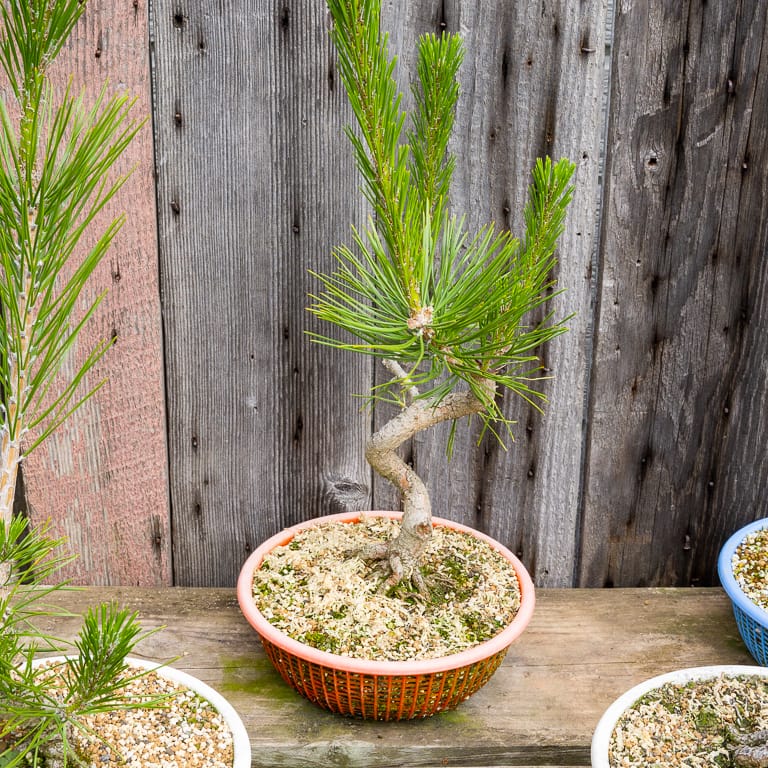
Young pine in a colander – the surface soil and bench look dry
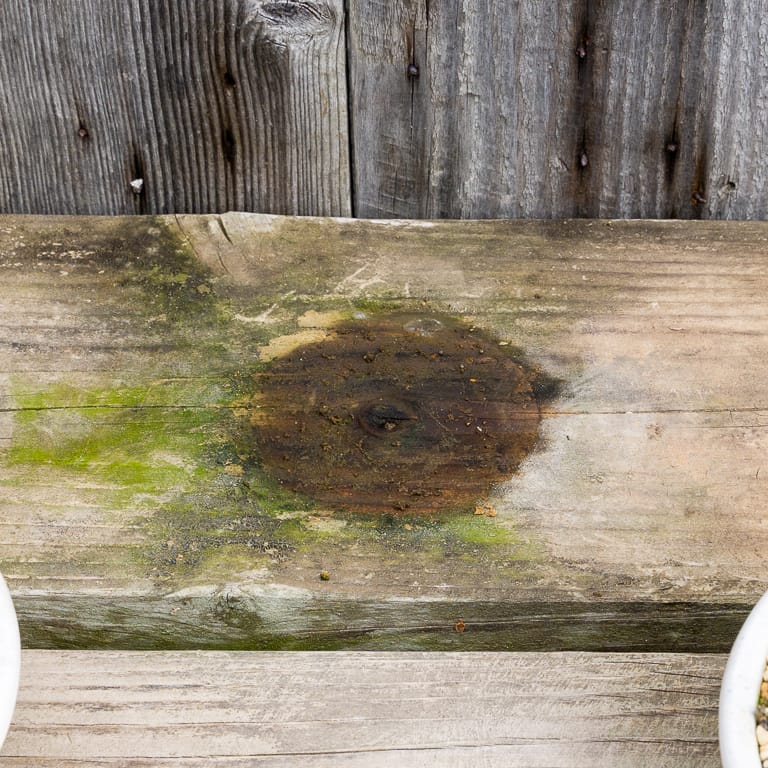
Moisture below the pot suggests that the tree may not need watering
I’ll also follow up after I water to make sure the water percolated throughout the rootball.
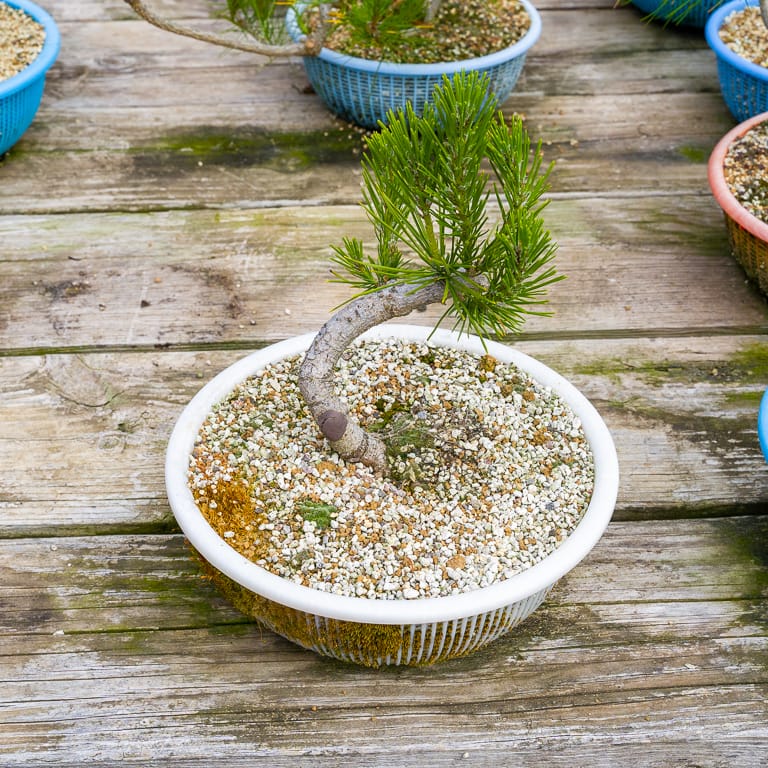
Young black pine before watering
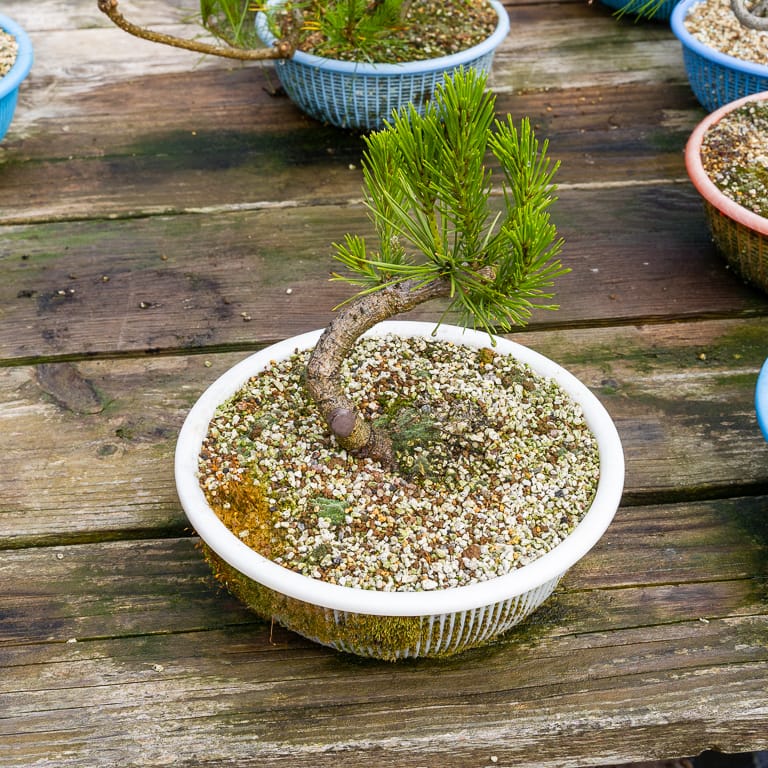
After watering – the soil and bench appear wet
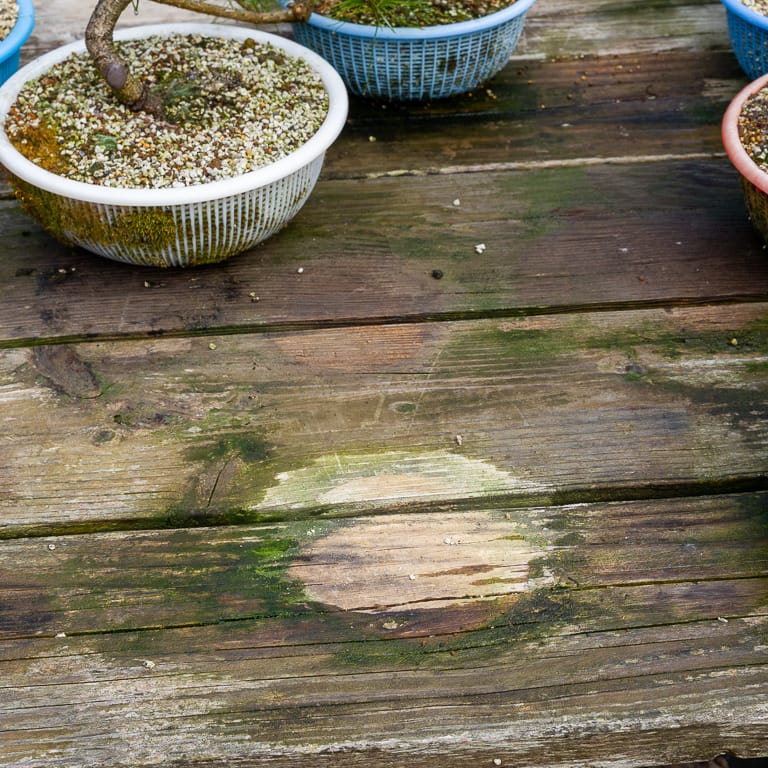
A dry spot below the pot suggests the tree didn’t get enough water
Although checking around the pot can be helpful, the main way I determine if a tree needs water is by looking below the surface of the soil. If I see wet akadama near the surface, I skip watering as the soil is very likely wet below. When it looks dry, I take a closer look.
Here’s a black pine with dry soil on the surface.
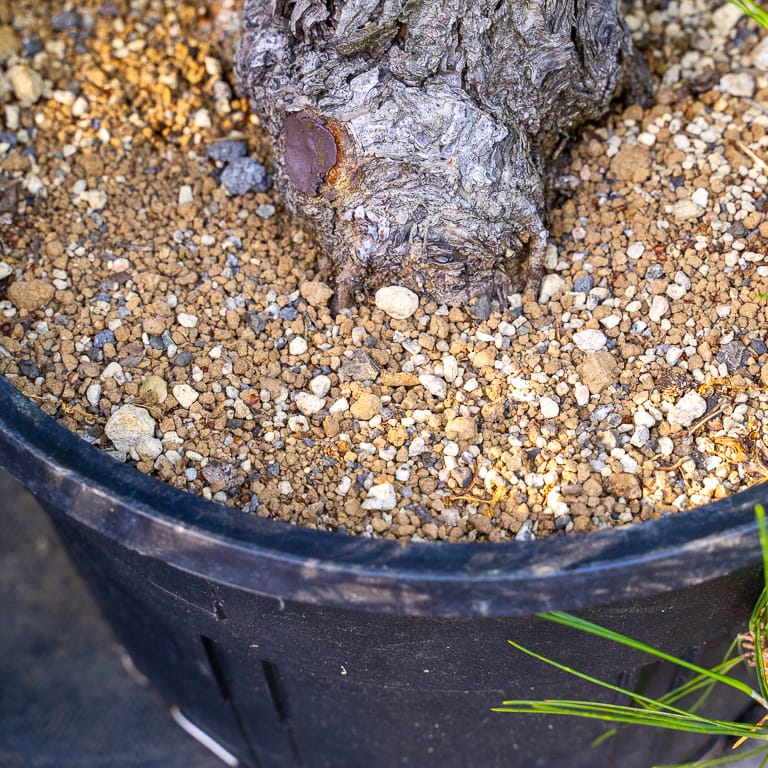
Dry soil
Just half an inch below the surface, the soil is still wet so I will not water it today.
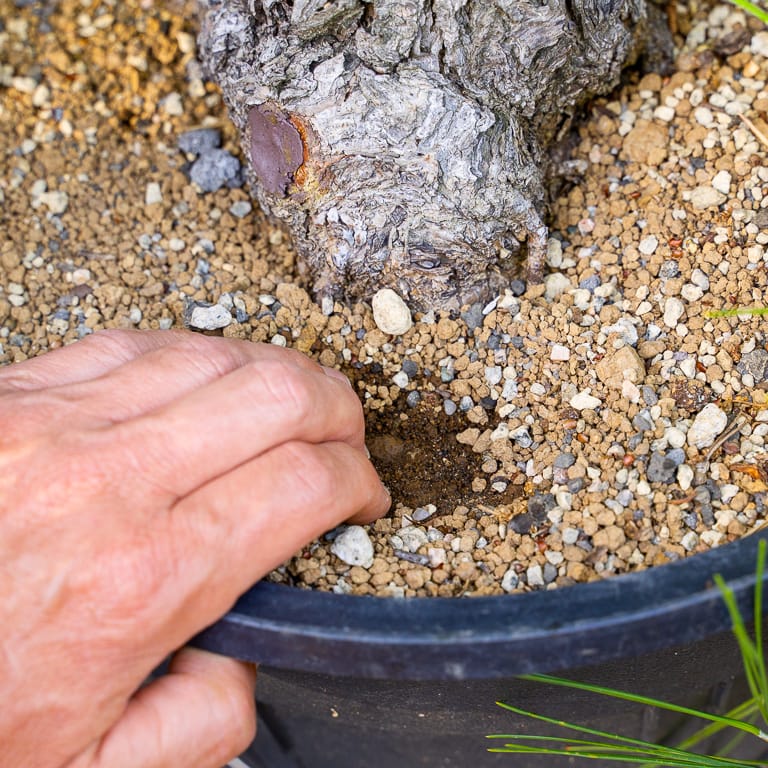
Moist soil below the surface – will check again tomorrow
The tree next to the pine above also has dry soil on the surface.
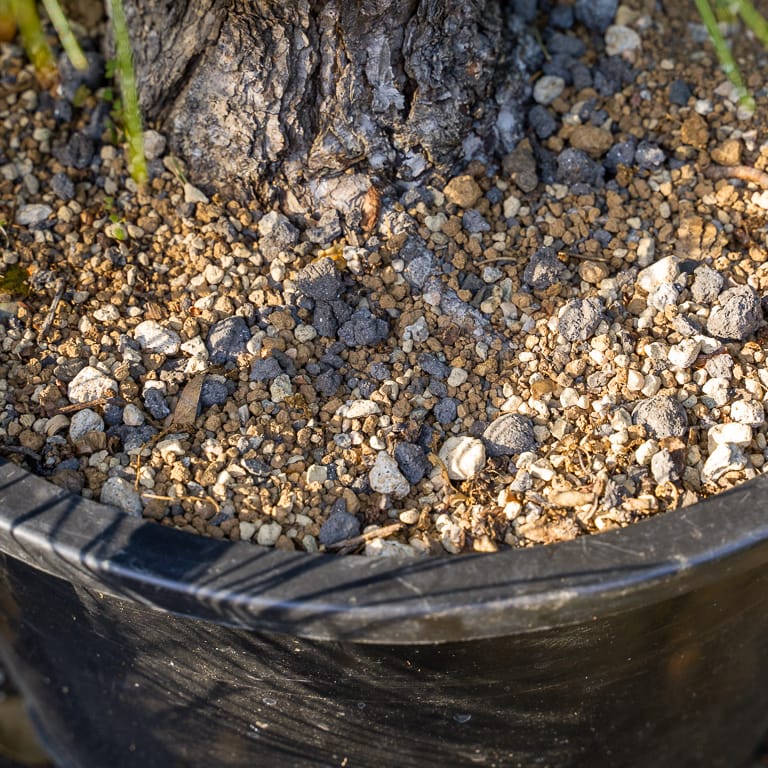
Another pine with dry soil on the surface
Digging down half an inch, I found there was very little moisture in the soil. I still didn’t water.
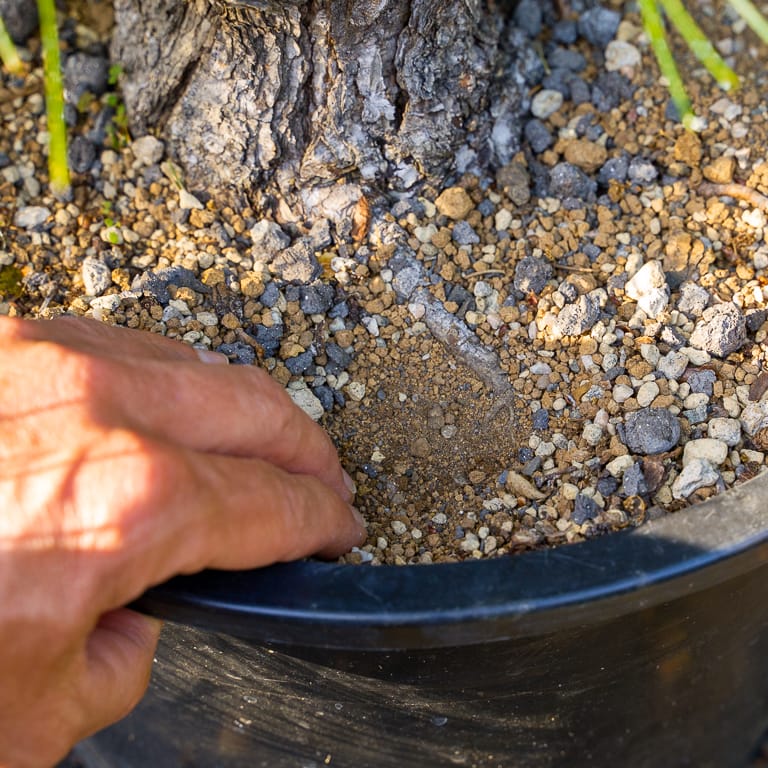
Partially dry soil below the surface
This pine is planted in a deep pot – about 12″ – so the odds are good that the soil is even more wet further down. I’ll water this tree tomorrow.
While pines and junipers like to partially dry out between waterings, other conifers like hinoki or redwood prefer relatively moist soil.
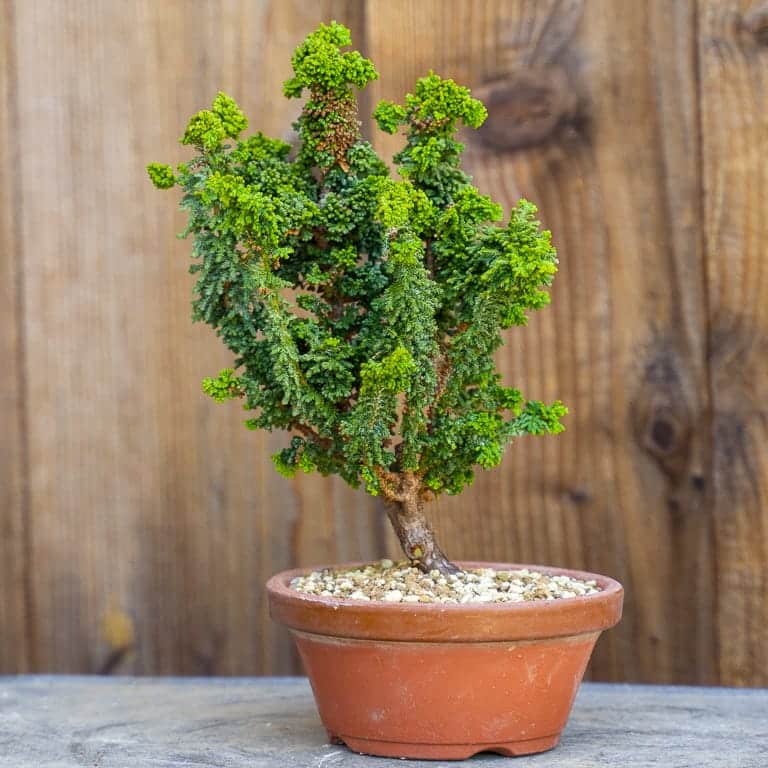
Sekka hinoki – is it time to water?
The surface soil on the sekka hinoki above looks dry.
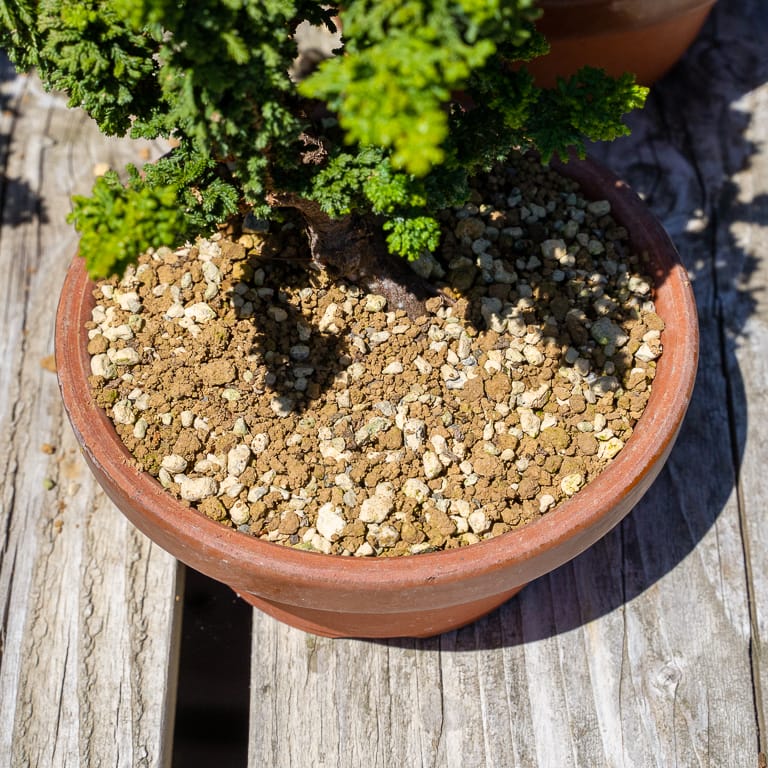
Dry surface soil
Digging down a bit, the soil is mostly dry.
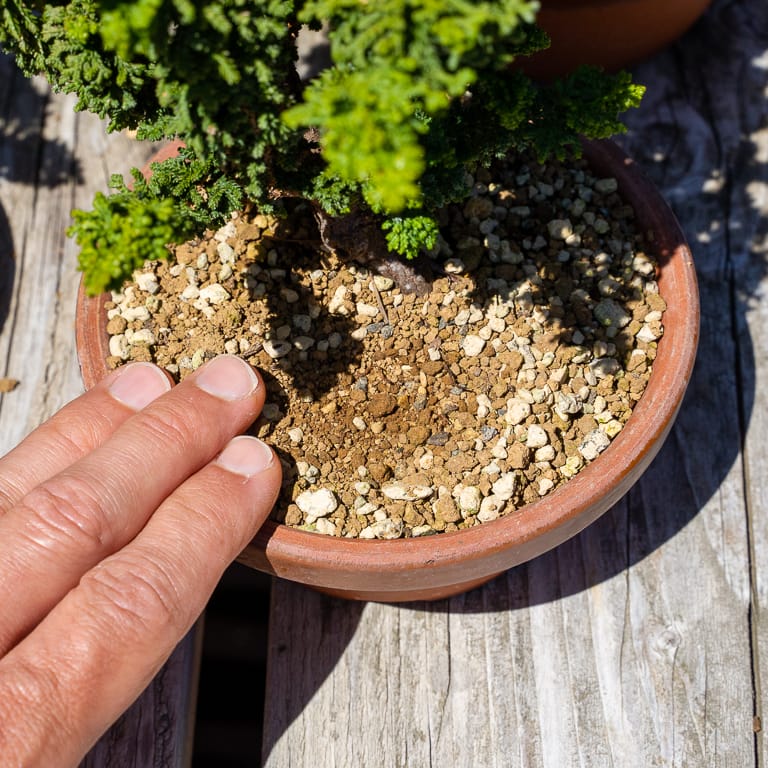
Partially dry soil below the surface – time to water!
After going through this exercise with many of the trees in my garden several times a day, I’ve developed an idea of how often different trees need water. And although this is helpful, it’s no replacement for actually checking the soil on any tree that may need watering.
The weather this week has been in the upper 70s or low 80s with around 50-60% humidity. I water the pines in colanders every one-to-two days, and I water the field-grown pines in large containers every four-to-five days.
Trees that were repotted this year usually use less water than trees that weren’t repotted, and trees with more foliage clearly need more frequent watering than trees with less foliage, including pines that have recently been decandled.
I follow the same process for deciduous trees and azaleas, but I water these trees far more frequently – usually when the soil is just starting to dry out.
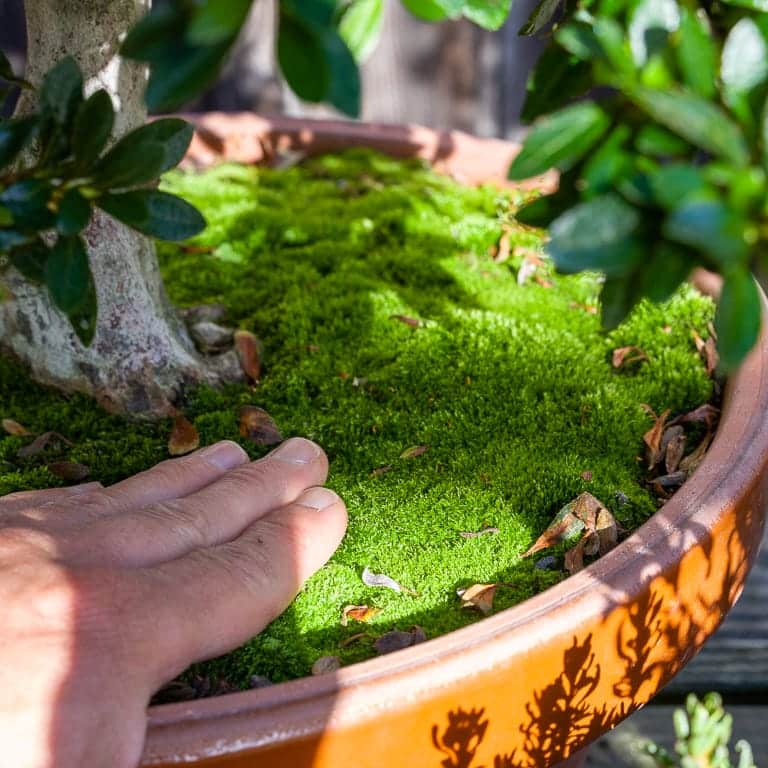
Checking the moss on an azalea rootball – I water when the moss feels dry
Is it necessary to check every tree every day? No! But the more frequently we do check our trees, the more likely we are to water at the right time and keep our trees healthy.
Subscribe to Bonsai Tonight
New Posts Delivered Every Tuesday and Friday
Paolo says
Hi, what would be the first symptoms of an under-watered Conifer? Thank you for the tips.
Jonas Dupuich says
Great question Paolo! It depends on the species, but unfortunately, the first sign on many conifers is discolored foliage (bronze or copper color). Once the tree gets to this stage the damage may be considerable. Beyond discoloring, some conifers wilt (new shoots on pines, for example) or simply begin to die back at the foliage tips (hemlock, juniper). More likely, drying out and/or root damage will simply lead the trees to lose vigor which is hard to see at the time as the effect may be noticeable one or months later.
Mirko says
Complimenti per l’ottimo articolo
Michael says
Jonas,
Great article – very timely topic which I have been struggling with. My JBP trees were repotted this year in 5-gallon nursery containers and have an older core soil material which is more water retentive. This “core” is surrounded by a new 70% non-organic pumice/lave mix that dries out more quickly near the surface. When you are testing for water content, which soil component do you focus on to determine to water or not?
Jonas Dupuich says
Thanks, Michael – and good question! I keep both in mind when the soils are mixed. If most of the roots are in the old mix, then that’s important for tree health, but the new mix matters too or roots wouldn’t grow into it. I usually let the original (old) mix mostly dry out between waterings to make sure it doesn’t stay too wet. And if there’s enough new soil, it will be OK if the roots don’t grow much in the old soil as they can fill in everywhere else.
Zack Clayton, CBS Editor says
Very useful article Jonas. The temperatures here have been in the mid to high 80s last week and mid to high 90s this week. Rain has been scattered showers and pop up storms. This is a method we can use here in central Ohio.
Jonas Dupuich says
Thanks, Zack! Rain can be tricky depending on the duration and the density of the canopy. We often get light rain in winter so I’ll frequently water when it’s raining.
Fred says
One of the most helpful articles on watering i’ve read! I would love to read a post similar to this on how you water your decidious trees! thanks alot Jonas!
Jonas Dupuich says
Thanks, Fred! Will see about making a counterpart article on deciduous trees – thanks for the encouragement!